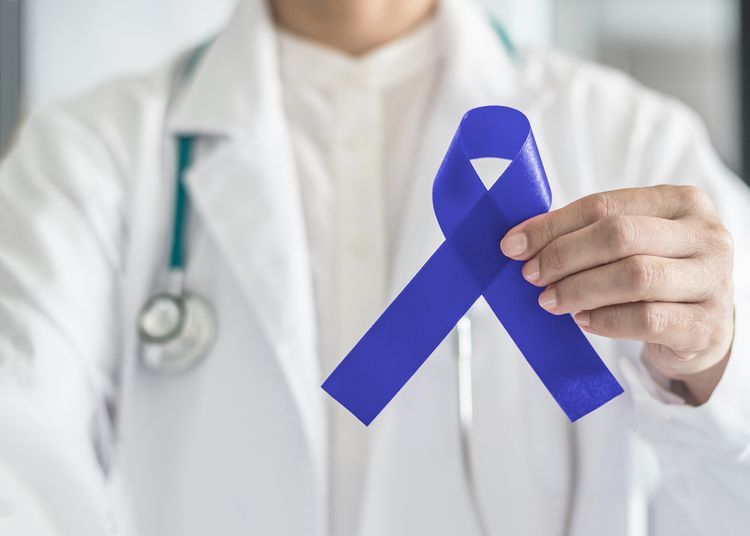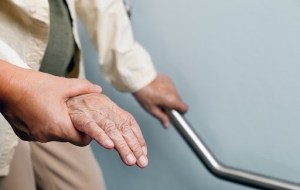By Bernadette Starzee
One of the most common types of cancer in both men and women, colorectal cancer, is on the rise in younger adults. This trend recently prompted the lowering of the recommended age for average-risk individuals to have their initial screening colonoscopy from 50 to 45.
“A lot of people don’t realize the age is no longer 50,” said Dr. Lynn M. O’Connor, chief of colon and rectal surgery for Catholic Health’s Mercy Medical Center in Rockville Centre and St. Joseph Hospital in Bethpage.
From 2011 to 2016, incidence of colorectal cancer among people under age 50 in the United States increased by 2.2% per year, according to the American Cancer Society. This contrasted sharply with the trend for adults ages 65 and older, which saw a 3.3% annual dip during that span, most likely due to colorectal screenings. About 12% of people diagnosed with colorectal cancer — about 18,000 cases — are now under age 50.
A screening colonoscopy can prevent colorectal cancer by finding and removing growths, called polyps, in the colon and rectum before they develop into cancer. The test can also detect cancer at an earlier, more treatable stage; the five-year survival rate for localized colorectal cancer is 90%.
While there are a few colorectal screening options, “the colonoscopy is the gold standard,” said Dr. Bethany DeVito, a gastroenterologist who is the associate chief of ambulatory clinical gastroenterology at North Shore University Hospital and Long Island Jewish Medical Center and the medical director of Northwell Health Endoscopy Center of Long Island.
A colonoscopy, which Dr. O’Connor said is about 94 to 98 percent effective at detecting colorectal cancer, is not only the most highly sensitive of the screening tools, but it’s the only test that’s both diagnostic and therapeutic.
“Any polyps detected can be removed during the procedure,” Dr. O’Connor said.
The vast majority of colorectal cancers develop from a category of polyps called adenomatous polyps.
“About 80% of colorectal cancers can be prevented by the removal of polyps,” Dr. DeVito said.
During a colonoscopy, a long, flexible tube with a video camera is inserted into the rectum. The device allows the doctor to view the entire length of the colon and remove polyps and abnormal tissue. Patients, who receive anesthesia for the procedure, must empty their bowels by taking a laxative course as indicated the evening before the procedure.
Despite its effectiveness at detecting and preventing cancer, Dr. O’Connor estimates that fewer than 50 percent of eligible people receive regular screening colonoscopies. The reasons vary, from a fear of anesthesia to mistrust of the health system to a lack of education/access to care. But for many people, it’s because they don’t want to face the prep.
“They may have heard from other people that the prep is really bad, so there’s that fear sometimes,” Dr. DeVito said.
However, the colonoscopy preparation process has improved in recent years.
“There are more options on the market for drinks that are tastier, and you don’t have to drink as much of it as you used to,” Dr. DeVito said. There are pill options, too, and generally speaking, people can start the process later in the day than in the past.
“So, they can go to work the day before the procedure and start preparing at home at about 4 or 5 p.m.,” Dr. O’Connor said. “We’ve come a long way.”
Other screening tools include stool tests that check for blood or abnormal DNA shed by polyps or cancer.
“You have probably seen commercials for Cologuard, which is a stool DNA test,” Dr. DeVito said.
A flexible sigmoidoscopy may be used in combination with a stool test as an alternative to a colonoscopy. With this test, sedation is not required and the patient can prepare with an enema rather than the full laxative protocol. But with this test, the scope can only evaluate the lower portion of the colon.
“These tests are offered because you have to give people options,” Dr. DeVito said. “Any kind of screening is better than no screening at all. But they are not as effective, and if any of these tests produce a positive result, a colonoscopy is the next step.”
While screening of patients with average risk begins at age 45, people at high risk of colorectal cancer should start earlier. The high-risk group, which includes individuals with a history of inflammatory bowel disease, a genetic predisposition to colorectal cancer, or a first-degree family member with a history of colon cancer or adenomatous polyps, should start screening earlier. Usually, the age is either 40 or 10 years younger than the close relative’s age at diagnosis.
“If, say, your mother was diagnosed at age 45, then you would start screening at 35,” Dr. DeVito said.
While you can’t do anything about certain risk factors, there are some things you can do to lower your risk. Eating a high-fiber, low-fat diet, exercising regularly, quitting smoking, and limiting alcohol use to one drink per day for women or two drinks per day for men will decrease your risk for developing colorectal cancer, Dr. O’Connor said.
Sign up for Long Island Press’ email newsletters here. Sign up for home delivery of Long Island Press here. Sign up for discounts by becoming a Long Island Press community partner here.



















